Mr. Rust's flight to Moscow – how a 19-year-old and his Cessna 172 made history.
Isn't it amazing how many contemporaries can still remember Mathias Rust's flight to Moscow? 36 years have passed since that 28 May 1987, and yet the act of the then very young pilot remains present to the public. It is interesting to consider which aspects of this hair-raising undertaking have probably ensured this astonishingly long half-life in the collective memory.
One can assume that, on the one hand, the person of Mathias Rust, who was barely 19 years old at the time, is an important factor. Who would suspect that a high school graduate from a sheltered social background would plan and actually realise such an daring venture! Mathias Rust was described by those around him at the time as highly intelligent and level-headed. The above-average student obtained his pilot's licence in August 1986 with a flawless final examination.
The flight to Moscow
With the sensational Moscow flight, the young pilot had also achieved a remarkable aeronautical feat. The following overview of his activities in the run-up to and during the Moscow flight give an idea of this: he had chartered a Cessna 172P from a Hamburg flying club at the beginning of May, having previously announced a flying trip to Scandinavia to his parents and brother. In a first leg, however, he flew via the Faroe Islands to the Shetlands, which was followed by another leg across the Atlantic to Reykjavik on Iceland. Incidentally, he had removed the rear row of seats in Germany to be able to stow extra fuel.
In Iceland at the latest, Rust must have decided to actually carry out the life-threatening flight to Moscow: using gold foil he had brought with him, he attached a sign he had designed himself to four positions on his Cessna 172. It shows a pyramid in a circle, supported on its underside by three feet. The circle symbolises the world, the top of the pyramid points to the sky, and the three feet, on which the whole thing rests, so to speak, stand for the three concepts of freedom, equality and brotherhood. This detail also underlines the fact that Mathias Rust had planned the flight with youthful idealism as a sign of world peace and reconciliation of peoples.
In the film footage showing Rust flying over Red Square, these symbols are clearly visible on both sides of the vertical stabiliser, on the underside of one wing and on the cabin roof. However, in photographs of the Cessna taken a little later, these emblems are no longer clearly visible; they must have quickly disappeared or dissolved. In any case, one last stage took Rust with the Cessna decorated in this way from Reykjavik via Bergen in Norway to Helsinki in Finland, where he landed at Malmi airport on 25 May. According to his own account, he was determined at this point to carry out the long prepared flight under any circumstances.
Three days later, on 28 May, he took off from here for his flight to the capital of the Soviet Union. After flying over the border in the territory of the then Estonian SSR, he followed the coastline and actually navigated his way successfully over the urban area of Moscow within about five hours. During these hours he was apparently accompanied at times by two MiG 23s, but their pilots did nothing to stop the young German. In full daylight and at a low altitude, Mathias Rust was able to continue his flight unmolested.
Arriving happily over the sea of Moscow houses, he said he orientated himself with the help of a Falck guidebook, which contained drawings of the city's sights. His original plan to land directly in front of the Kremlin on Red Square was thwarted by the curious Muscovites, who waved (and filmed) Rust's Cessna hovering several times low over the square, but did not clear it. Finally, Rust managed a smooth landing on the nearby Great Moskva Bridge, after which he taxied his aircraft to a nearby bus park near the famous Basilica of St. Basil and switched off the engine.
A key ingredient to the enduring notoriety of Rust's Moscow flight is the special circumstances of the time against the backdrop of the Cold War. In 1987, Mikhail Gorbachev had been General Secretary of the CPSU for two years and Ronald Reagan, President of the USA; had already recognised the USSR as the "Evil Empire". The Cold War was entering its final phase, with arms races and the looming horror of nuclear war still gripping the population in both East and West. It is still touching today that a young person could actually believe that with an extraordinary act he could set a sign of peace and promote the end of the Cold War division of the world.
Amazingly: Rust's flight was actually to have considerable impact! Thus, the reform-minded General Secretary Gorbachev immediately used the unheard-of circumstance that a German plane could enter the heart of the communist USSR completely unmolested to strike a comprehensive blow against circles in the officer corps of the Red Army that were unwilling to reform. More than 300 high and highest military officers were dismissed or sent into early retirement "by mutual agreement". Thus both Defence Minister Sergei Sokolov and the head of Soviet air defence Alexander Koldunov had to take their hats. The outrageous mishaps and the weaknesses of air defence revealed by Rust's flight gave Gorbachev the opportunity to get powerful opponents of his reforms out of the way and subsequently to advance the restructuring of the Soviet state in the sense of perestroika and glasnost.
Everyone will agree that Mathias Rust was incredibly lucky. But how great this luck actually was is made clear when one considers that only four years earlier a fully crewed Korean Airlines Boeing 747, which had veered off course under unexplained circumstances and had strayed into Soviet territory, had been shot down by a Soviet fighter jet over Sakhalin. All 269 occupants of the KAL plane had met a horrible death in the crash. The hesitation, slow decision-making and delegation of responsibility from one office to another, which may have saved Mathias Rust's life, must also be seen against the background of the event described. The horror of the international political consequences as well as the concentrated horror of the world public over the shooting down of a fully occupied civilian aircraft was still in the bones of the decision-makers in air defence and thus prevented rapid and decisive action.
The pictures and film footage showing Rust communicating with people, civilians and uniform wearers alike, after the landing on Red Square are touching. Regardless of whether one understands what is being said or only sees silent images: the body language of those involved conveys in a clearly recognisable way excitement and self-consciousness, curiosity, friendliness and astonishment, in short: it becomes clear that here - beyond ideology and moral labelling - human meets human.
For me personally, these images are one of the strongest legacies of Rust's flight, worth pulling out now and then and contemplating thoughtfully.
Mathias Rust's biography was unusual and varied, even after the Mosque flight and the fourteen months of imprisonment he served in a Moscow prison. If you want to find out more about his life, you can easily do so on the Internet. Rust's Cessna 172 was preserved and - after many years in a Japanese leisure club - was brought back to Germany in 2008, where it is currently on display in the German Museum of Technology in Berlin.
About the kit and building process
The kit of the Cessna 172 with the decals for Rust's machine was published by Italeri in 2016. However, the moulds for it are much older and come from another renowned manufacturer: already in 1981 this Cessna 172 had been offered for the first time by ESCI. This almost biblical age is evident in all aspects: not only are the parts bursting with mighty rivets, but far too deep panel lines furrow the surfaces. An extra portion of fish skin and the generally still rather relaxed approach to the subject of "details" complete the impression that we are holding a real "oldie" in our hands. On the positive side, the good fitting accuracy is to be praised, also the usable transparency of the clear parts is one of the good features of this aged kit. Now if you can find a way to deal with the panel notches and the overly large rivets, this model kit can still be recommended!
My reaction was to sand the rivets back to a tolerable size and fill the indentations with putty. Partly these have to be redone, partly they remain visible anyway due to the shrinkage of the putty - but with a more realistic depth. As soon as these hurdles were overcome, the model could be built up to a good approximation of Rust's Cessna 172 with reasonable effort and without major difficulties. The decals supplied by Italeri were of good quality and were easy to apply.
In conclusion
Model building topics from the field of civil aviation sometimes bring to light surprising insights and, as in this case, some personal memories. Rust's flight as an initiative for peaceful international understanding seems to be of great topicality; it is therefore fitting that with Italeri's kit there is a possibility to build a model of the aircraft of the sensational 1987 Moscow flight!
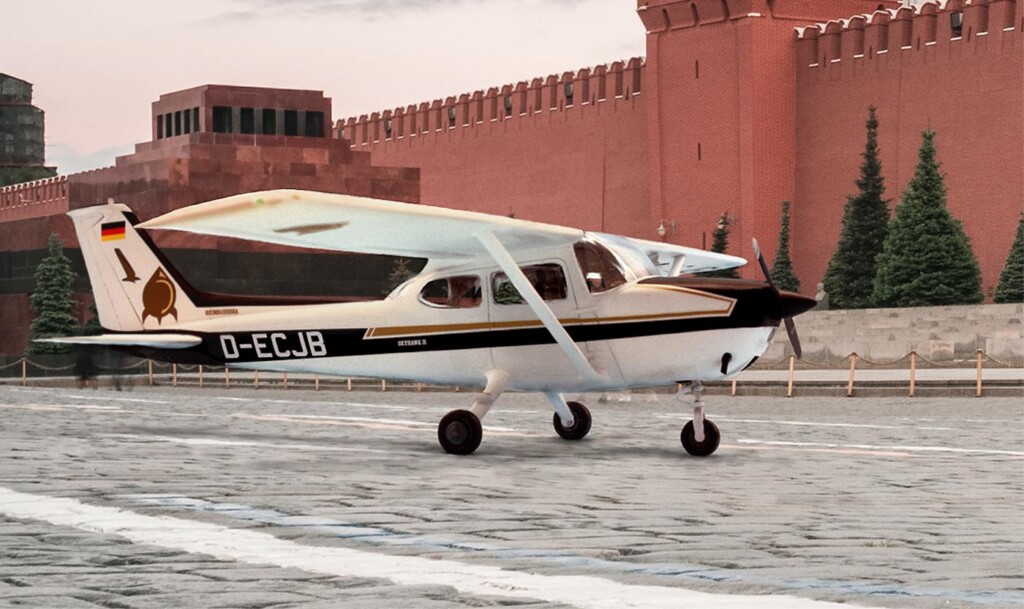























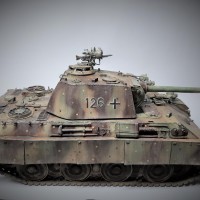
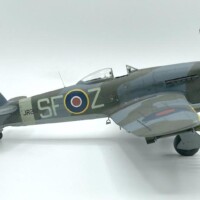
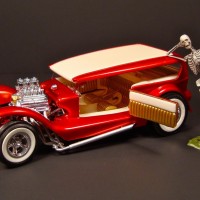
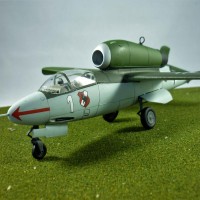
A wonderful, touching story and an equally wonderful model, Roland!
Congratulations!
Thank you my friend!
Italeri kits of that era seemed to have been made by the Matchbox gouger. I've had similar experiences with filling in the panel lines of other Italeri kits made in that time.
Excellent job on this kit.
Also, still amazed that he flew through some of the most heavily defended air space in the world and not shot down.
Glad you like it- thank´s for your words!
I’m not sure of the authenticity of the story, Roland, but the model is marvelous.
Thank you George!
Brilliant kit! Great story. "The hesitation, slow decision-making and delegation of responsibility from one office to another, which may have saved Mathias Rust's life"
Also the same traits which allowed Chernobyl.
Thank you for your comment!
An excellent build, Roland @rosachsenhofer
Indeed a sensational historical event.
Thank you indeed!
You achieved a fantastic result with that old kit. I remember that flight, and thought that Rust was very lucky to live to tell about it. Great story! I would like to see some manufacturer offer a good quality kit of the 172 (and others like the 180, 190/195, etc), but I guess they're just not as sexy as Mustangs, Spitfires, and 109s and probably wouldn't be profitable. I struggled with a Minicraft kit several years ago to model a friend's 172 for him, so I can appreciate the extra work you put in to this build.
1 attached image. Click to enlarge.
Thank you very much! I agree with you - the Minicraft series of small civilian machines in 1/48th scale will interest me in the near future... Great result!
Nice write up and great 172! Having many hours in one I should build one some day.
Great story and nice model.
Must recommend the Museum of Technology in Berlin, as the article refer to it. Stunning exhibitions and filled to the brim with aircraft history https://technikmuseum.berlin/.
Thank you for your words- and the recommendation!
Great project and story, Roland. A victory of talent and persistence over plastic with that kit.
I have about 300 hours in 172s. A good reliable airplane. Yours looks great.
Thank you Tom, very nice words!
I remember the incident very well. It was a huge embarrassment to the Soviet Government and the military but even at the time I was struck by Rust's naivety and idealism. The model is a lovely little piece and superbly detailed and finished.
Thank you for your interest and the motivating feedback on the model!
Nicely done! I too remember the event; The sad point is that the threat of nuclear confrontation is still real today as it was then.
Thank you Robert! However, unfortunately all too true and relevant
Superb bit of work!
Thank you alot!
This is a great article and an awesome build of arguably one of the most audacious acts of the Cold War. I remember this clearly like it happened yesterday. I was a High School student back then and Rust's act was very inspirational. You did an amazing job on this model. Thanks for posting it.
Thank you for your words of appreciation Morne -and sharing your memory!